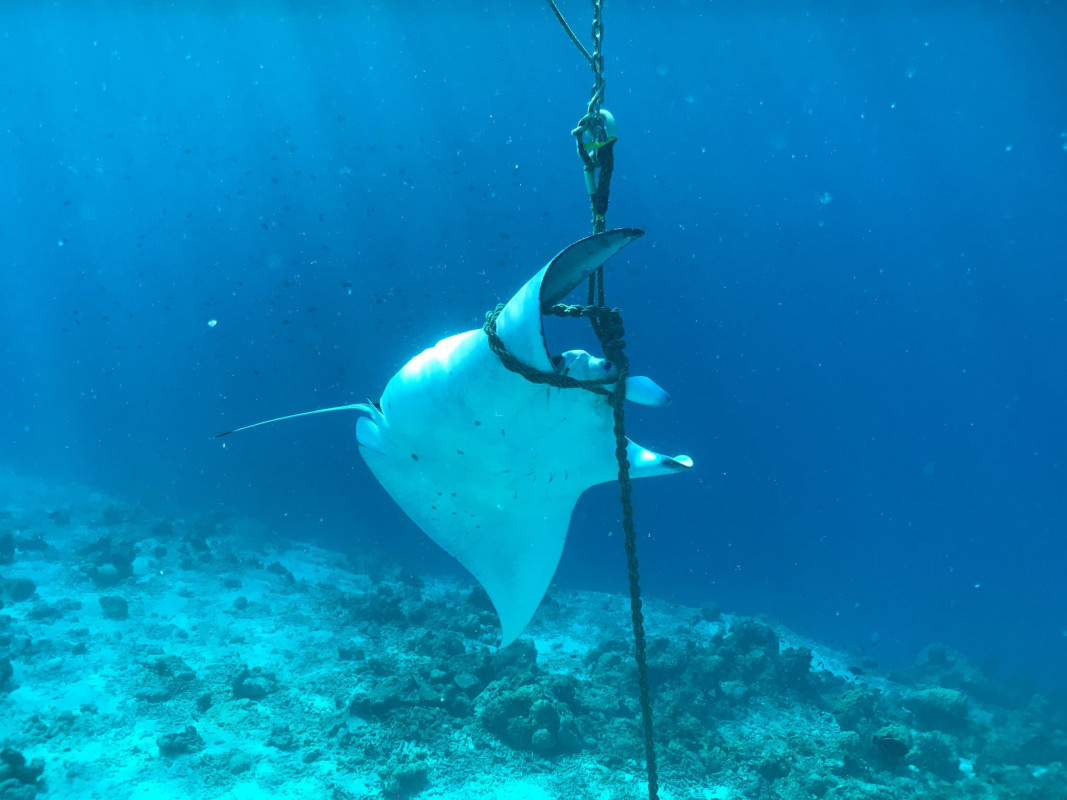Increasing number of mooring lines deployed throughout the country puts manta rays and other marine life at risk of entanglement

Increasing number of mooring lines deployed throughout the country puts manta rays and other marine life at risk of entanglement
The Environment Protection Agency (EPA) released a statement urging careful mooring practices on behalf of the public, to prevent entanglement and potential injury or death of manta rays and other marine life in Maldives waters.
The EPA statement released on Sunday noted that they have noticed a concerning increase in the number of manta rays getting injured or dying following entanglements with mooring, or the ropes, chains or anchors by which sea vessels are made fast and secured at sea.
The agency further urged seafarers to develop and begin using mooring systems that would not put megafauna such as manta rays and other marine life at risk, highlighting that manta rays are critical to the Maldives from both an environmental and economical perspective.
Therefore, EPA stressed the importance of collective efforts in protecting the habitats and different species of manta rays in the Maldives.
Additionally, EPA revealed that all species of rays in the Maldives had been classified as protected species under Section 4(a) of the Environment Protection and Preservation Act of the Maldives (4/93) on 16 June 2014, and that the Ministry of Environment had announced this publicly once the preservation came into effect.
The agency also noted that two species of manta rays found in the Maldives were classified as "vulnerable to extinction" on a red list by the International Union for the Conservation of Nature.